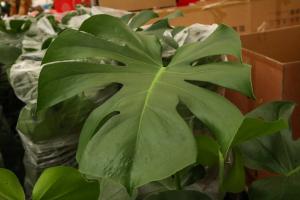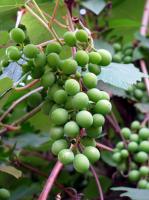Why Does My Dumb Cane Plant Form Water?
If you have noticed water droplets forming on the leaves of your dumb cane plant, it may be concerning. However, this phenomenon is actually quite normal and can occur for a variety of reasons.
What is a Dumb Cane Plant?
Dumb cane plants, also known as Dieffenbachia, are tropical plants commonly found in households, offices, and public spaces. They are known for their large, colorful, and patterned leaves, as well as their ease of care. While they are generally low-maintenance, they can be sensitive to changes in their environment or watering habits.
Why Do Dumb Cane Plants Form Water?
The water droplets that form on the leaves of a dumb cane plant are actually called guttation. Guttation occurs when excess water is pushed out of the plant through small openings called hydathodes. These hydathodes are located on the tips of the leaves and stem of the plant.
Guttation is most commonly seen in plants that have high levels of moisture in the soil, as well as those that are actively growing. When a dumb cane plant has too much water in its soil, it is unable to absorb all of it, leading to the excess water being pushed out through the hydathodes.
What Causes Excess Water in Dumb Cane Plants?
Excess water in dumb cane plants can be caused by a variety of factors. Overwatering is one of the most common causes, as it leads to waterlogging and poor drainage. Additionally, humidity and temperature can play a role in the amount of moisture in the soil. High humidity levels can lead to excess moisture in the soil, while low humidity levels can cause the soil to dry out too quickly.
How Can You Prevent Guttation in Dumb Cane Plants?
To prevent guttation and excess water in dumb cane plants, it is important to regulate the amount of water they receive. While they require consistent moisture, they should not be overwatered. Watering once or twice a week should be sufficient for most dumb cane plants, depending on the humidity levels and temperature in the space they are located.
Additionally, it can be helpful to improve drainage in the pot by adding a layer of gravel to the bottom, or repotting the plant in a well-draining soil mix. Proper ventilation can also improve the air circulation around the plant, reducing humidity levels that can contribute to excess moisture.
Conclusion
In conclusion, guttation or the formation of water droplets on the leaves of dumb cane plants is a natural occurrence that is caused by excess water in the soil. While not harmful to the plant, it can be a sign of overwatering or poor drainage. By regulating watering habits and improving drainage, guttation can be prevented and your dumb cane plant can continue to grow and thrive.

 how many times do yo...
how many times do yo... how many planted tre...
how many planted tre... how many pine trees ...
how many pine trees ... how many pecan trees...
how many pecan trees... how many plants comp...
how many plants comp... how many plants can ...
how many plants can ... how many plants and ...
how many plants and ... how many pepper plan...
how many pepper plan...






























